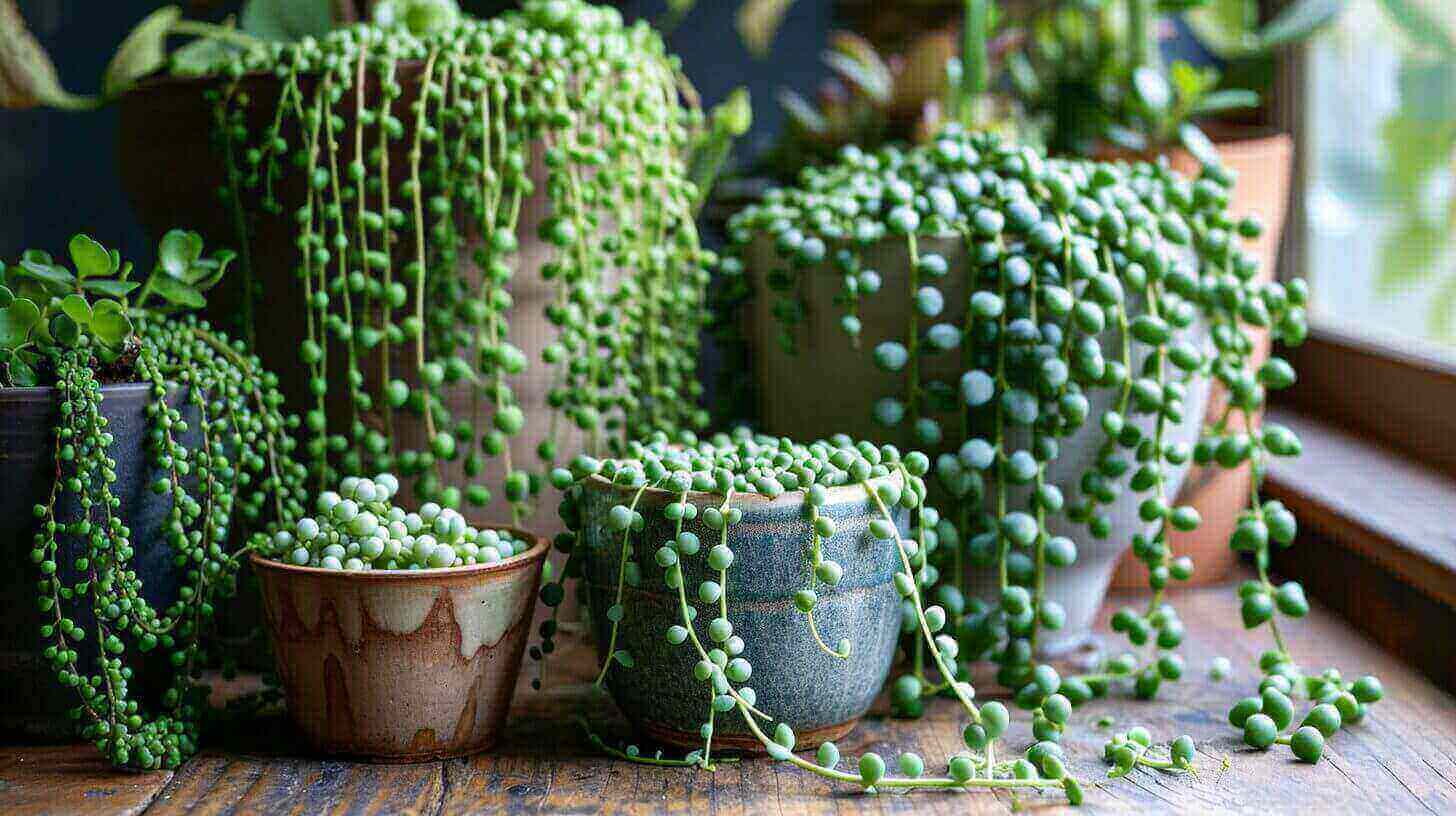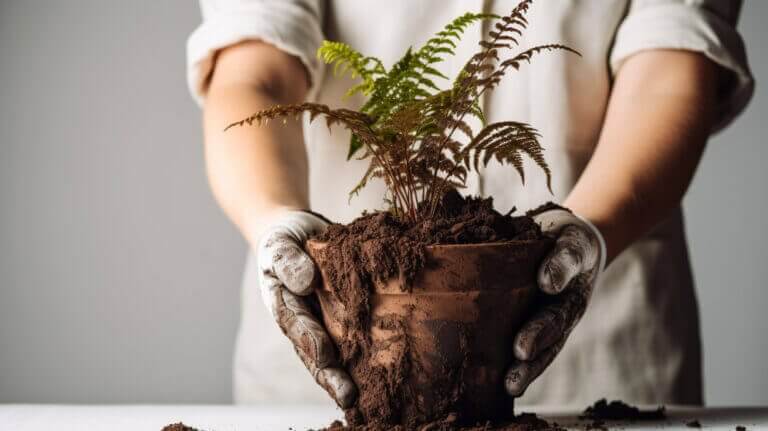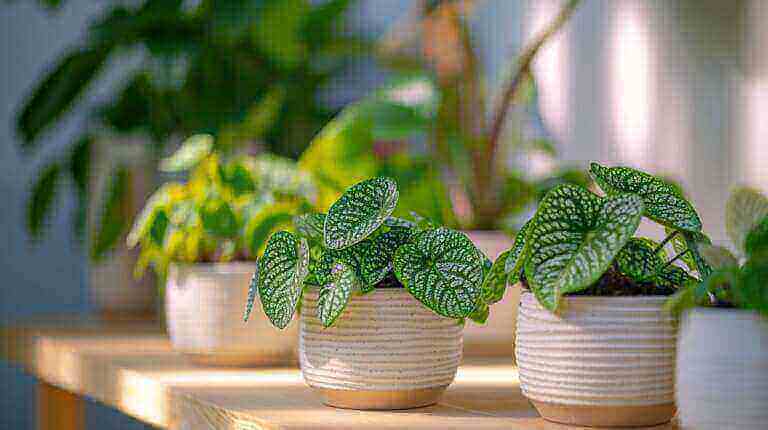A Beginner’s Guide to Growing String of Pearls Plants(Senecio Rowleyanus)
Welcome to my beginner’s guide on growing string of pearls houseplants! If you’re an indoor houseplant enthusiast looking to add a unique and beautiful succulent to your collection, the string of pearls is a perfect choice. In this guide, I will provide you with valuable information on how to plant, grow, and care for these fascinating houseplants.
Key Takeaways:
- String of Pearls is a unique and beautiful succulent native to Southwest Africa.
- These houseplants feature trailing stems with spherical leaves, resembling a string of pearls.
- String of Pearls prefers bright but indirect light and well-drained soil.
- Watering should be done only when the soil is dry to avoid root rot.
- Propagation can be done through stem cuttings and pruning helps maintain the plant’s shape.
What is a String of Pearls Plant? (Senecio Rowleyanus)
A String of Pearls succulent plant, scientifically known as Curio rowleyanus (formerly Senecio rowleyanus), is a popular succulent native to Southwest Africa. It is characterized by its unique trailing stems that bear small spherical leaves, resembling a string of pearls. This distinctive appearance has made it a sought-after choice for indoor gardening enthusiasts.
The String of Pearls plant belongs to the Asteraceae family and is known for its low-maintenance nature, making it perfect for beginners. Its trailing stems can grow several feet long, making it an excellent choice for hanging baskets or as a trailing accent in indoor plant displays.
“The String of Pearls plant is a fascinating succulent that adds a touch of whimsy and beauty to any indoor space. Its unique trailing stems and spherical leaves create an eye-catching display that is sure to capture attention.”
With its succulent nature, the String of Pearls plant is adapted to survive in arid conditions. It stores water in its fleshy leaves and stems, allowing it to withstand periods of drought. This adaptation also means that it prefers well-drained soil and can suffer from root rot if overwatered.
Light and Soil Requirements for String of Pearls
Proper light and soil conditions are essential for the healthy growth of String of Pearls plants. Understanding the light requirements and soil preferences of this unique succulent can help ensure its vitality and longevity.
Light Requirements
String of Pearls indoors plant thrive in bright, indirect light. They should be placed near windows or in well-lit rooms where they can receive ample natural light. However, it is important to note that direct sun light can cause leaf scorching, so it is best to provide filtered light or keep them a few feet away from the window to protect them from harsh rays.
Soil Requirements
String of Pearls plants require sandy, well-drained soil to prevent waterlogged conditions that can lead to root rot. A cactus soil mix, blended with sand and perlite, creates the perfect balance of moisture retention and drainage. This type of soil allows the roots to breathe and prevents excess water from sitting in the pot, promoting overall plant health.
It is important to water the plant thoroughly and allow the soil to dry out between waterings to avoid overwatering, which can also cause root rot. Additionally, providing appropriate humidity levels and avoiding temperature extremes will further enhance the plant’s growth and resilience.
Table: Comparison of Light and Soil Requirements for String of Pearls
| Light Requirements | Soil Requirements | |
|---|---|---|
| Ideal Conditions | Bright, indirect light | Sandy, well-drained soil |
| Avoid | Direct sunlight | Waterlogged soil |
| Additional Tips | Filtered light near windows | Cactus soil mix with sand and perlite |
Watering and Care Tips for String of Pearls
Proper watering and care are essential for the health and longevity of your String of Pearls plant. These unique succulents are known for their drought-tolerant nature, making them relatively low-maintenance. Here are some tips to ensure that your String of Pearls thrives:
Watering
String of Pearls plants should be watered sparingly, allowing the soil to dry out between waterings. Overwatering can lead to root rot, which can be detrimental to the plant. To determine if your plant needs watering, simply feel the soil with your finger. If it feels dry to the touch, it’s time to water. It’s important to note that String of Pearls plants are better at surviving dry conditions than wet ones, so it’s always better to underwater than overwater.
When watering, it’s best to use the “soak and dry” method. Water the plant thoroughly until water drains out from the bottom of the pot, then wait for the soil to completely dry out before watering again. This allows for proper hydration and prevents the roots from sitting in standing water.
Care Tips
In addition to proper watering, here are a few care tips to keep in mind:
- Light: String of Pearls plants prefer bright but indirect light. Place your plant near a window where it can receive bright light without direct sunlight, which can cause leaf scorching.
- Humidity: These plants can tolerate normal indoor humidity levels and do not require any additional humidity.
- Fertilizer: String of Pearls plants do not require frequent fertilization. During the growing season (spring and summer), you can use a diluted succulent fertilizer once a month to provide a nutrient boost. However, be cautious not to over-fertilize, as it can harm the plant.
| Care Tips | Description |
|---|---|
| Watering | Water sparingly, allowing the soil to dry out between waterings. Avoid overwatering to prevent root rot. |
| Light | Place near a window with bright but indirect light. Avoid direct sunlight to prevent leaf scorching. |
| Humidity | Tolerates normal indoor humidity levels, no additional humidity required. |
| Fertilizer | Use diluted succulent fertilizer once a month during the growing season. Be cautious not to over-fertilize. |
How To Propagate String of Pearls
String of Pearls are easy to propagate to expand your collection and maintain the plant’s health and appearance. Here are some essential tips for successful propagation, pruning, stem cuttings, and repotting.
Propagation
String of Pearls can be easily propagated through stem cuttings. To propagate, select a healthy stem with several sets of pearls. Using a clean and sharp pair of scissors or pruning shears, cut the stem just above a set of pearls. Allow the cutting to dry for a couple of days before planting it in well-draining soil or rooting it in water.
“Propagation is an exciting and cost-effective way to multiply your String of Pearls plants. With a little patience and care, you can create new plants to enjoy or share with friends and family.” – Me
If planting in soil, choose a pot with drainage holes and use a cactus or succulent potting mix. Make a small hole in the soil and insert the stem cutting, gently pressing the soil around it. If rooting in water, place the cutting in a glass or jar filled with water, ensuring that the bottom pearls are submerged. Over time, roots will start to develop, and you can transfer the cutting to soil once the roots are about an inch long.
Pruning
Regular pruning is beneficial for the health and appearance of your String of Pearls plant. Pruning helps to remove any dead or diseased pearls, encourages branching and a fuller growth, and maintains the plant’s desired shape. Use clean and sharp pruning shears or scissors to carefully remove excess pearls or trim back any overgrown stems.
Repotting
Repotting String of Pearls should be done every 1-2 years, typically in the spring or summer when the plant is actively growing. Choose a slightly larger pot than the current one to accommodate the shallow root system. Ensure the pot has drainage holes to prevent waterlogging. Gently remove the plant from its current pot, loosen the roots, and place it in the new pot with fresh succulent potting mix. Water the plant lightly after repotting and avoid direct sunlight for a few days to allow the plant to adjust to its new environment.
| Propagation Tips | Pruning Tips | Repotting Tips |
|---|---|---|
| Choose a healthy stem with multiple pearls for propagation | Remove dead or diseased pearls regularly | Repot every 1-2 years, using a slightly larger pot |
| Allow stem cuttings to dry before planting them in soil or water | Encourage branching by trimming back overgrown stems | Use fresh succulent potting mix and ensure proper drainage |
| Plant stem cuttings in well-draining soil or root them in water | Prune to maintain the desired shape of the plant | Water lightly after repotting and avoid direct sunlight |
Types of String of Pearls and Care Tips
String of Pearls plants are not limited to just the classic variety. There are several related trailing species that offer a unique twist to your indoor garden. Here are some popular types of String of Pearls and their care tips:
1. String of Bananas (Curio radicans)
The String of Bananas variety features elongated and curved leaves, resembling a bunch of bananas. It requires similar care to the classic String of Pearls, with moderate light and well-drained soil. This variety is known for its cascading growth, making it a perfect choice for hanging baskets or trailing down shelves.
2. String of Watermelons (Curio herreanus)
The String of Watermelons variety gets its name from the unique shape and pattern of its leaves, which resemble miniature watermelons. It thrives in bright indirect light and well-drained soil. This variety is slightly more drought-tolerant than the classic String of Pearls and can add a pop of color to your indoor garden.
3. String of Tears (Curio citriformis)
The String of Tears variety features tear-shaped leaves that give a delicate and graceful appearance. It requires similar care to the classic String of Pearls, with bright indirect light and well-drained soil. This variety is an excellent choice for terrariums or as a trailing accent in a desktop garden.
Regardless of the variety you choose, caring for String of Pearls plants involves providing adequate light, well-drained soil, and minimal watering. These succulents are generally low-maintenance but make sure to keep an eye out for any signs of distress or pests. With the right care and attention, your String of Pearls plants will thrive and add a touch of natural beauty to your home.
| Variety | Leaf Shape | Light Requirements | Soil Requirements |
|---|---|---|---|
| String of Pearls | Spherical | Bright indirect light | Well-drained, sandy soil |
| String of Bananas | Elongated, curved | Moderate light | Well-drained soil |
| String of Watermelons | Watermelon-shaped | Bright indirect light | Well-drained soil |
| String of Tears | Tear-shaped | Bright indirect light | Well-drained soil |
Common Problems and Solutions for String of Pearls
As a proud plant parent myself, I understand that even the healthiest plants can encounter some common problems. When it comes to String of Pearls, a few issues can arise, but don’t worry—I’m here to help you troubleshoot and find the best solutions.
Root Rot from Overwatering
One of the most common problems with String of Pearls is root rot caused by overwatering. These succulents dislike sitting in wet soil for too long. To prevent root rot, make sure you’re allowing the soil to completely dry between waterings. A good rule of thumb is to water your plant only when the top inch of the soil feels dry to the touch. Also, ensure that your pot has proper drainage and that excess water can escape.
Pest Infestations: Mealybugs and Spider Mites
Another challenge you may face with your String of Pearls is pest infestations, particularly by mealybugs and spider mites. These tiny critters can cause damage to your plant and disrupt its growth. To combat these pests, you can create a simple solution of vinegar and water. Spray the mixture directly on the affected areas to help eliminate the pests. Regularly inspect your plant to catch any infestations early and take action promptly.
Maintaining Optimum Growing Conditions
While root rot and pests are common problems, prevention is always better than finding a solution. The key to a healthy String of Pearls is to provide it with the right growing conditions. Be mindful of the amount of water you give your plant, ensuring it is not excessive. Place your plant in a well-lit area, but avoid direct sunlight to prevent leaf scorching. By creating a suitable environment, you can minimize the chances of encountering these issues.
FAQ
What is the best way to water a string of pearls?
Water your string of pearls sparingly. This plant is a succulent and doesn’t need a lot of water. Wait until the soil is completely dry before watering again.
How often should I repot a string of pearls?
Repotting should be done every 2-3 years or when the plant outgrows its pot. Always use fresh succulent soil when repotting.
What type of fertilizer is best for a string of pearls?
A balanced plant food, designed for succulents, is best. Fertilize your string of pearls during the growing season for best results.
Can a string of pearls be grown indoors?
Yes, a string of pearls can be grown indoors. In fact, it prefers to be kept indoors in a location with bright, indirect light.
Where can I buy a string of pearls plant?
String of pearls plants can be found at most garden centers, or online. Always choose a healthy plant for the best results.







